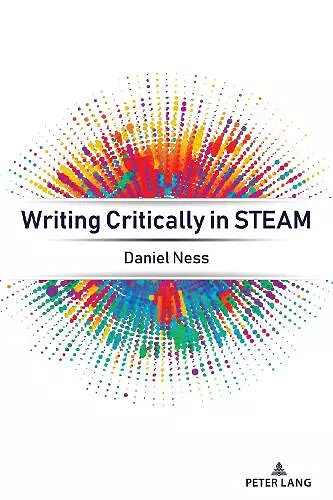Writing Critically in STEAM
Daniel Ness author Brett Elizabeth Blake editor Judith M Dunkerly editor
Format:Paperback
Publisher:Peter Lang Publishing Inc
Published:20th Feb '24
Currently unavailable, and unfortunately no date known when it will be back

Writing can be a tortuous process in any discipline. However, it can be particularly daunting in science, technology, engineering, the arts or architecture, and mathematics (henceforth, STEAM). In fact, it is not uncommon for most STEAM professionals to say things like, "As an engineer, I write only when I have to…" or "engaging in science is easy for me but sitting down and writing my manuscripts are so painful" or "I’m really good at math but I’m a terrible writer…" However, writing can become an easier process in STEAM especially when one’s ideas are fleshed out and organized in a systematic manner. While there are a number of books or articles on reading and writing in specific STEM disciplines, at present, there are no books or supplementary materials that serve to support STEAM learners, practitioners, and even researchers in becoming better critical writers. Writing Critically in STEAM will be the first book of its kind to focus primarily on what the scientist, technology specialist, engineer, artist, art historian, or architect, and mathematician needs to know in order to become a finer writer in one’s field. In addition, given the current post-truth zeitgeist, Writing Critically in STEAM addresses the essential issue of evidence as a means of supporting scientific and scientifically related claims.
In Writing Critically in STEAM, Ness is again concise yet expansive. In many ways, considering his career, he was destined to write this book. On one level this book is about how to write in the different STEAM disciplines. We know intuitively that we write differently in math, for example, than in technology, but we don’t always know what the large differences are—not to mention the subtle gray zones between the genres. As Ness teases out these differences, he explores the multiple underlying dynamics of writing that take place before, during and even after the writing process within STEAM. This focus includes the writer’s stance in relation to thinking, working, and communicating within the different disciplines. It includes subtle differences between the genres within the disciplines, such as those between scientific writing and science writing. And it includes the formation of representation within the disciplines. Richard D. Sawyer Professor, Washington State University, Vancouver
Daniel Ness reminds us that in order to not have writing criticized, we attend to the verity within STEM. As in all disciplines, writing critically is essential. Not affirming excuses made by scientific writers that due to the discipline, excellence in writing is not expected, the book advises us that we develop appropriately when we have learned to write. The significance is clear, STEM scholars and students should understand and exercise excellence and criticality in their writing, bottom line. Writing Critically is STEM’s just do it! clarion call. Shirley R Steinberg, PhD Editor; Sage Handbook of Critical Pedagogies Shirley R. Steinberg Professor, University of Calgary
ISBN: 9781636673226
Dimensions: unknown
Weight: 293g
186 pages
New edition